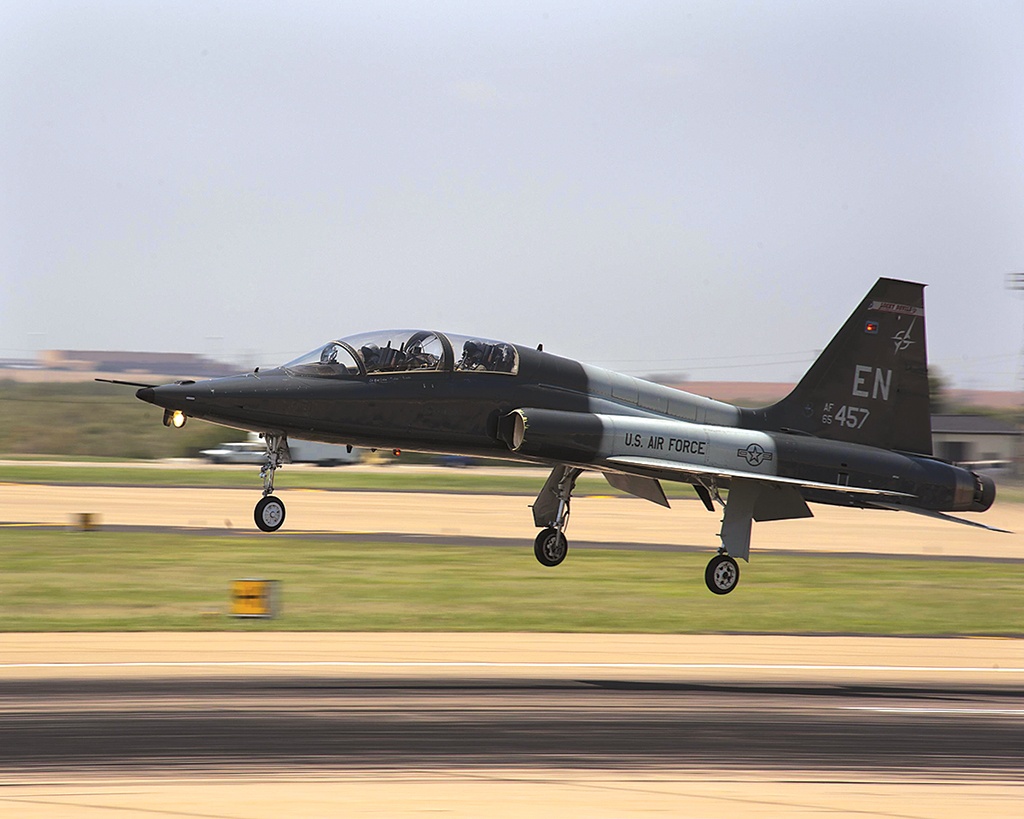
Compounding the problem are changing requirements for the new plane that have led to some potential contractors dropping out of competition for the contract for the so-called T-X program. According to a report in Aviation Week, Northrop Grumman Corp. (NYSE: NOC) recently dropped its original plan for a modified BAE Hawk in favor of a clean-sheet design.
In February, General Dynamics Corp. (NYSE: GD) withdrew from a partnership with Italy’s Finmeccanica subsidiary Alenia Aermacchi to modify the Italian company’s M-346 trainer. General Dynamics would have been the prime contractor for the program, but apparently decided that the changing requirements made the design less compelling. To remain as a candidate for the program, Alenia must find another U.S.-based partner or compete for the contract as a foreign prime contractor.
ALSO READ: Why Cuts to U.S. Defense Spending Should Not Hurt U.S. Contractors
There are three clean-sheet proposals for the T-X currently on the table: Northrop Grumman’s; a design from Boeing Co. (NYSE: BA) in conjunction with Saab; and one from Textron AirLand, a joint venture between Textron Inc. (NYSE: TXT) and AirLand Enterprises, for a version of the company’s Scorpion fighter plane.
Lockheed Martin Corp. (NYSE: LMT), which has developed a supersonic T-50 trainer in conjunction with Korea Aerospace Industries, is also reported to be considering a clean-sheet design. The T-50 entered service in 2002 and likely has the inside track for the new Air Force trainer without a clean-sheet design.
Even though its trainer fleet is 50 years old, the Air Force did not list the T-X as one of its top three priorities. Those are the F-35A fighter from Lockheed Martin, the Long-Range Strike Bomber (the B-3) and the KC-46A tanker from Boeing. The B-3 is the only one of these still awaiting a contractor and the Air Force has said that it will choose a winner this summer from between two competing bids for 80 to 100 units at a cost of about $550 million per copy. Bidders are a team led by Northrop Grumman and another led by Boeing and including Lockheed Martin.
Aviation Week notes that by early in the next decade the current T-38 fleet will force a choice on the Air Force due to its age: either there will be a replacement or the Air Force will pay greater costs to maintain and replace the aging trainers.
Because the T-X program is one of just two unfunded U.S. Air Force programs, major defense contractors are essentially forced into competing for the program, regardless of the changing requirements and apparent lack of funding. It may be a risky proposition, but it is the only game in town.
ALSO READ: Airbus, Boeing Plan to Make Flying Even More Uncomfortable
Take Charge of Your Retirement In Just A Few Minutes (Sponsor)
Retirement planning doesn’t have to feel overwhelming. The key is finding expert guidance—and SmartAsset’s simple quiz makes it easier than ever for you to connect with a vetted financial advisor.
Here’s how it works:
- Answer a Few Simple Questions. Tell us a bit about your goals and preferences—it only takes a few minutes!
- Get Matched with Vetted Advisors Our smart tool matches you with up to three pre-screened, vetted advisors who serve your area and are held to a fiduciary standard to act in your best interests. Click here to begin
- Choose Your Fit Review their profiles, schedule an introductory call (or meet in person), and select the advisor who feel is right for you.
Why wait? Start building the retirement you’ve always dreamed of. Click here to get started today!
Thank you for reading! Have some feedback for us?
Contact the 24/7 Wall St. editorial team.
